What Are GenAI Tools?
GenAI tools, short for generative AI tools, leverage artificial intelligence to generate content across various mediums. They are trained on vast datasets, enabling them to perform tasks such as text writing, image creation, code generation, and video production.
These tools augment human creativity by automating tasks and offering new ways to explore creative possibilities. They are primarily used in industries like entertainment and marketing, where the demand for personalized and engaging content is high.
GenAI tools can learn and mimic human-like patterns in their outputs, achieving results that can often be indistinguishable from human creations. By employing deep learning models like transformers, these tools predict and generate new content based on learned data. As they continue to evolve, their applications and accuracy are expected to expand.
This is part of a series of articles about generative AI applications
In this article:
The Growing Role of Generative AI Tools Across Industries {#the-growing-role-of-generative-ai-tools-across-industries}
Generative AI tools are becoming integral to a wide array of industries, each leveraging the technology’s capabilities to improve efficiency, innovation, and productivity:
- In content creation, AI tools are helping writers, marketers, and creatives generate content faster by automating routine tasks.
- In design and art, generative AI is pushing creative boundaries by assisting artists and designers in producing artwork and concepts.
- Software development has also seen benefits, with AI tools generating code snippets, identifying coding errors more effectively, and suggesting solutions. This has improved the quality of software while reducing development time.
- In language translation, generative AI is enabling real-time, highly accurate translations with no human intervention.
- In healthcare, AI tools are transforming medical imaging and diagnostics. For example, multiple studies showed that radiologists using AI-enhanced image analysis see an improvement in the detection of subtle anomalies.
- In the gaming industry, developers are utilizing AI to create dynamic virtual environments and adaptive gameplay.
- In finance, AI tools are being used to predict market trends and optimize trading strategies.
Related content: Read our guide to generative AI development (coming soon)
Notable GenAI Tools and Platforms {#notable-genai-tools-and-platforms}
General-Purpose Generative AI Tools {#general-purpose-generative-ai-tools}
General generative AI tools are versatile and cater to a broad audience, from writers seeking assistance in content creation to businesses aiming to automate customer interactions. These tools are integrated into various applications, providing users the ability to generate new ideas and complete tasks with high efficiency.
1. OpenAI GPT-4o

GPT-4o is an optimized version of OpenAI’s GPT-4 model, designed for high efficiency and multimodal capabilities. It can process text and images as input while generating text-based outputs. GPT-4o offers enhanced performance over its predecessors, generating responses twice as fast and at half the cost of GPT-4 Turbo.
Key Features of GPT-4o:
- Multimodal input: Accepts both text and image inputs, outputting text-based responses.
- High efficiency: Generates text 2x faster and is 50% cheaper than GPT-4 Turbo.
- Complex task handling: Capable of executing complex, multi-step processes with high intelligence.
- Large context window: Supports up to 128,000 tokens, allowing for extended conversations or large data processing.
- Enhanced vision capabilities: Provides superior performance on vision-related tasks.
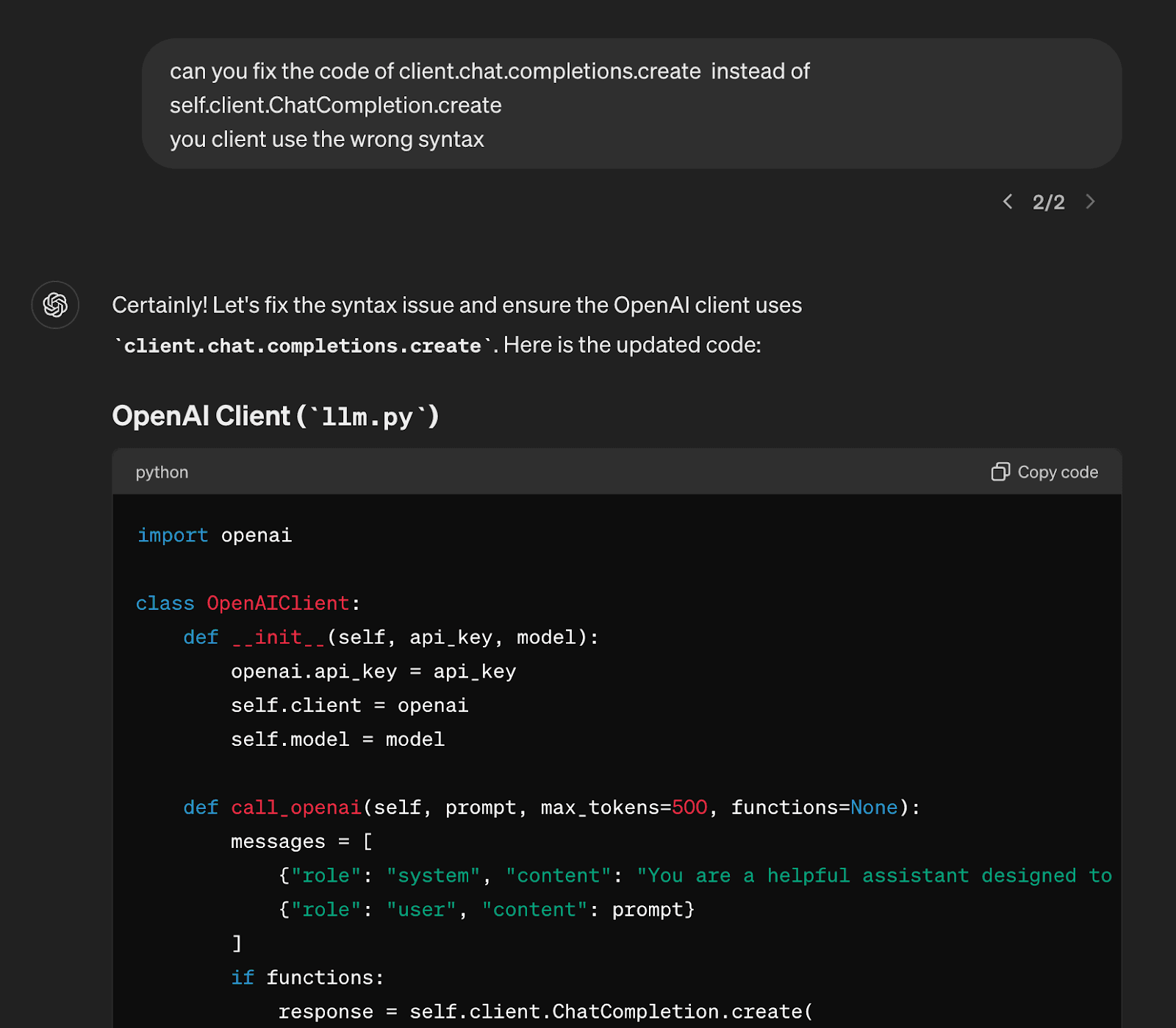
Source: OpenAI
2. Google Gemini

Google Gemini is a family of AI models for a range of use cases. Built to handle multimodal inputs like text, code, images, audio, and video, Gemini models can run efficiently on everything from large data centers to on-device systems. These models play a role in Google’s Project Astra, which aims to enhance the naturalness and efficiency of AI assistant interactions.
Key Features of Google Gemini:
- Multimodal capabilities: Process and combine inputs from text, code, images, audio, and video.
- Long context windows: 1.5 Pro and Flash support up to one million tokens, with a two-million-token window available for select users.
- Project Astra: Integrates Gemini technology for AI assistants, allowing real-time, context-aware, multimodal interactions on devices like phones and smart glasses.
- Scalability: Efficient across platforms, from data centers to mobile devices, enabling widespread use cases.
- Versatile model family: Includes models tailored for various performance needs.

Source: Google
3. Anthropic Claude

Anthropic Claude is an AI to assist individuals and teams in performing a range of cognitive and creative tasks. It can handle complex reasoning, code generation, and vision analysis, making it suitable for diverse applications like website development, image transcription, and multilingual content creation.
Key Features of Anthropic Claude:
- Advanced reasoning: Performs complex cognitive tasks, surpassing simple text generation or pattern recognition.
- Vision analysis: Can transcribe and analyze static images, including handwritten notes, graphs, and photographs.
- Code generation: Capable of building websites, turning images into structured JSON data, and debugging complex codebases.
- Multilingual processing: Translates between languages in real-time and supports the creation of multilingual content.
- Security & compliance: Claude is SOC 2 Type II certified, HIPAA compliant, and accessible via AWS and GCP, ensuring enterprise-level security.

Source: Anthropic
Code Generation Tools {#code-generation-tools}
Code generation tools transform how software development is approached by automating coding tasks and boosting developer productivity. These tools assist programmers in generating code snippets, suggesting completions, and troubleshooting errors, leading to an accelerated development process.
4. GitHub Copilot

GitHub Copilot is an AI-powered coding assistant to enhance developer productivity by providing real-time code suggestions and completions. Integrated directly into code editors, it helps developers write, debug, and improve code more efficiently. By learning from the project’s context and coding style, Copilot delivers highly relevant recommendations, speeding up the software development process.
Key Features of GitHub Copilot:
- AI coding assistance: Provides real-time code completions and suggestions based on natural language prompts and the project’s context.
- Improves code quality & security: Offers suggestions that enhance code quality, while blocking insecure coding patterns with built-in vulnerability prevention.
- Collaborative support: Acts as a virtual team member, answering both general programming questions and specific codebase inquiries.
- Personalized recommendations: Tailors suggestions to your organization’s knowledge base, complete with inline citations for easy reference.
- Pull request assistance: Tracks work progress, suggests descriptions, and helps reviewers understand the rationale behind changes.
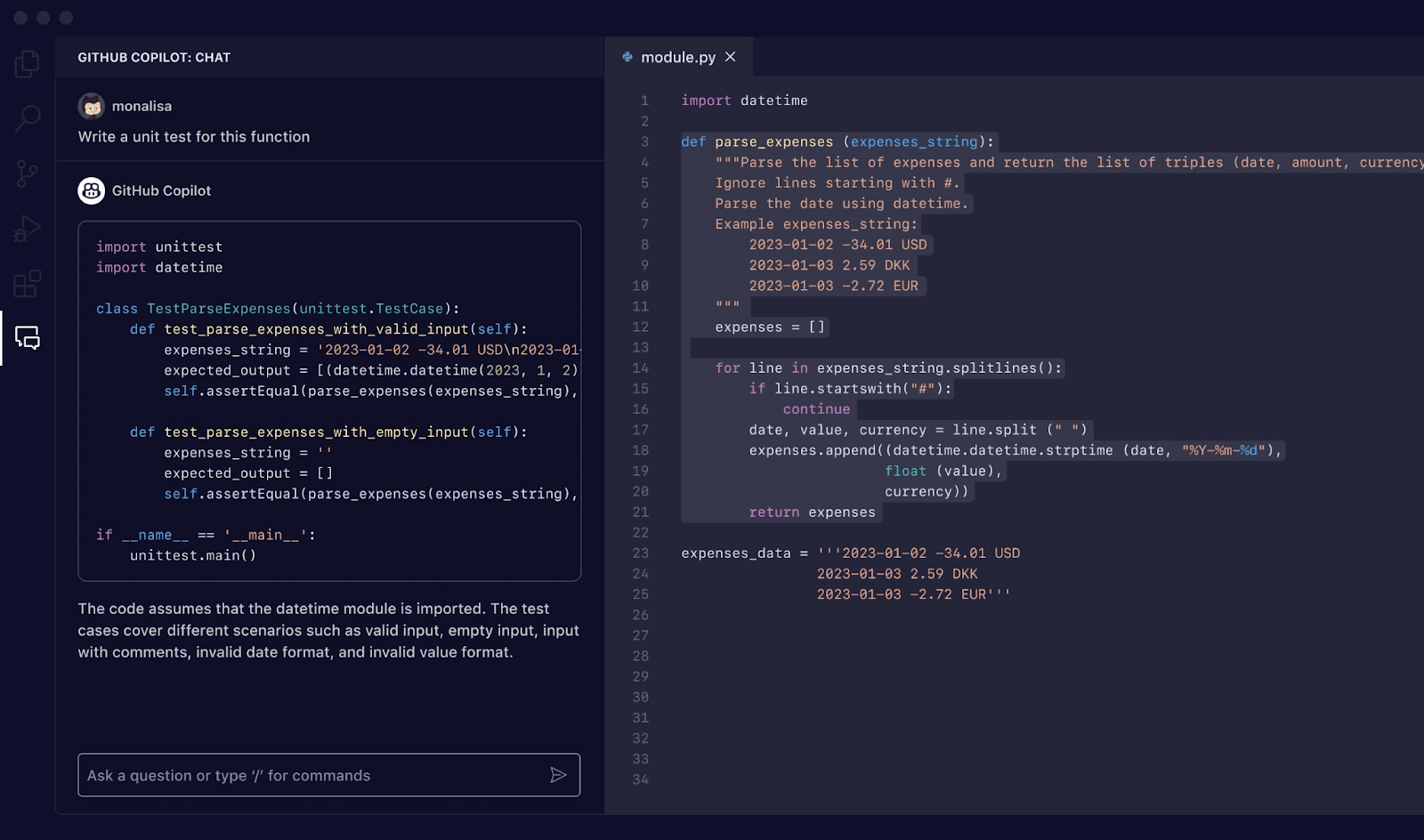
Source: GitHub
5. Tabnine

Tabnine is an AI-powered code assistant that simplifies the coding process by automating repetitive tasks and generating high-quality code in real time. It helps developers maintain their workflow by providing personalized code completions for snippets, full lines, and entire functions as they type. Built on a custom-developed language model, Tabnine adapts to the context of the project, offering accurate and relevant coding suggestions based on user inputs.
Key Features of Tabnine:
- Real-time code completions: Autogenerates code snippets, full lines, or entire functions as you type, with personalized suggestions.
- Natural language to code: Converts plain text comments or natural language prompts into working code directly within the code editor.
- Automates repetitive tasks: Autofills classes, variables, and common coding patterns or templates to reduce manual effort.
- Highly personalized output: Uses a custom large language model (LLM) and project-specific context to generate precise code recommendations.
- Improves productivity: Designed to minimize time spent on mundane or boilerplate coding tasks, keeping developers focused on high-value work.

Source: Tabnine
6. OpenAI o1

OpenAI o1 is a new series of reasoning models to handle complex problem-solving tasks in fields like science, coding, and mathematics. Unlike previous AI models, o1 spends more time thinking through challenges before generating responses, significantly improving its ability to solve hard problems. This series, currently in its preview phase, excels in complex reasoning tasks and surpasses earlier models in coding, math, and scientific benchmarks.
Key Features of OpenAI o1:
- Advanced reasoning: Trained to spend more time thinking through problems, resulting in more accurate solutions for complex tasks in science, math, and coding.
- Exceptional problem-solving: Performs at a high level in physics, chemistry, and biology, with results comparable to PhD students and strong performance in coding competitions.
- Accurate code generation: Capable of generating and debugging complex code, with superior coding abilities compared to earlier models.
- Safety & alignment: Features enhanced safety mechanisms, using reasoning skills to follow safety guidelines effectively, with top-tier jailbreak resistance.
- Real-time learning: Continuously improves its problem-solving strategies by learning from mistakes and refining its thinking process.
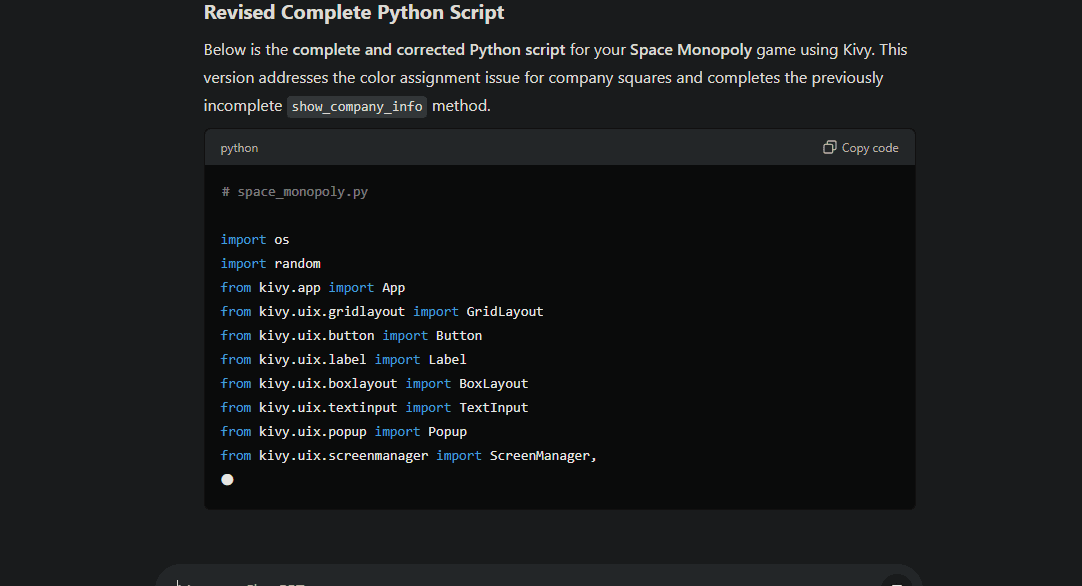
Source: OpenAI
Image Generation Tools {#image-generation-tools}
Image generation tools are revolutionizing digital content creation by providing users with creative capabilities once limited to skilled artists. Through AI, these tools can produce detailed, unique, and creative imagery, altering how visual content is conceived and produced.
7. DALL-E 3

DALL-E 3 is OpenAI’s latest AI image generation model, capable of transforming complex and nuanced textual descriptions into highly accurate visual representations. It offers significant advancements over previous versions by adhering more closely to user prompts, reducing the need for prompt engineering. Integrated with ChatGPT, DALL-E 3 enables users to collaborate on creative ideas, with ChatGPT helping refine prompts for more precise image generation.
Key Features of DALL-E 3:
- Text-to-image precision: Generates detailed and accurate images based on complex prompts, with improved adherence to descriptions over previous versions.
- Integrated with ChatGPT: Allows users to collaborate with ChatGPT for prompt refinement.
- Creative control: Users can make quick adjustments to generated images by tweaking prompts without needing to start from scratch.
- Safe and responsible generation: Built-in safety measures prevent the creation of violent, adult, or hateful content, with mitigations for public figures and biased representations.
- Provenance tools: Experimental tools help identify whether an image was AI-generated, supporting transparency in image use.
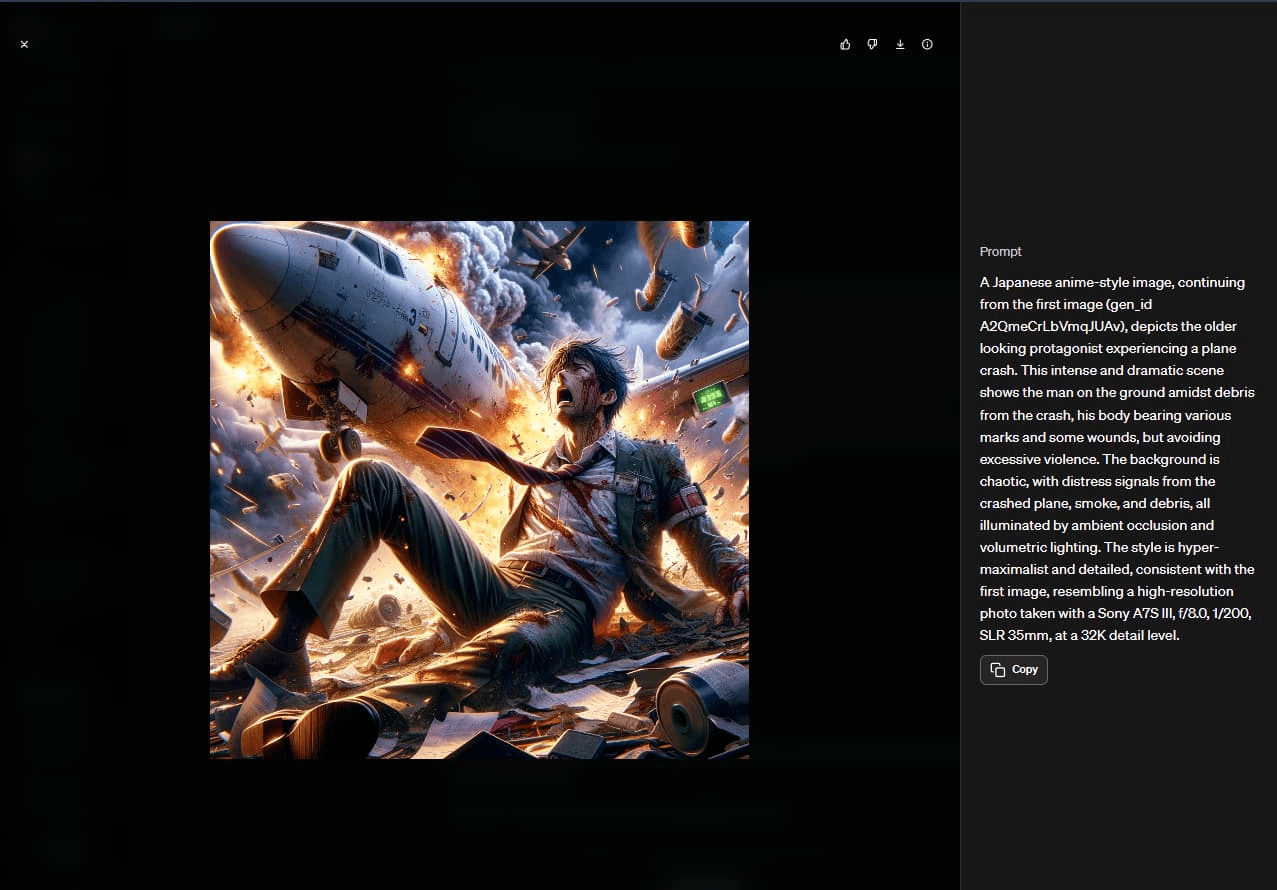
Source: OpenAI
8. Midjourney

Midjourney is an AI-powered image generator that transforms text prompts into unique, detailed images using machine learning techniques. It can generate anything from photorealistic scenes to abstract artistic interpretations, making it a versatile tool for creative professionals and hobbyists alike. It is popular for concept art, visual brainstorming, and artistic projects.
Key Features of Midjourney:
- Text-to-image generation: Converts natural language prompts into high-quality images, from photorealistic to abstract styles.
- Machine learning models: Utilizes advanced latent diffusion models to interpret prompts and create diverse artistic outputs.
- Web and Discord interfaces: Originally accessible via Discord, Midjourney now offers a user-friendly web interface for easy image creation and collaboration.
- Create variations: Allows users to generate multiple interpretations of a prompt and explore different styles through its variations feature.
- Customization options: Offers various settings for image generation, including aspect ratio, stylization, resolution (upscaling), and privacy options (stealth mode).

Source: Midjourney
9. Stable Diffusion

Stable Diffusion, developed by Stability AI, is an image generation tool that offers a suite of APIs for developers to create AI-driven image applications. These APIs enable the development of features for content creators across industries like publishing, gaming, design, marketing, and more. Stable Diffusion’s services provide solutions for generating, upscaling, editing, and transforming images.
Key Features of Stable Diffusion:
- Text-to-image generation: Leverages the latest Stable Diffusion models for high-quality, diverse style image creation without requiring extensive prompt engineering.
- Image upscaling: Offers standard and creative upscaling options to transform images into 4K quality, providing photorealistic outputs from low-resolution inputs.
- Image editing: Includes tools like inpainting, background removal, and generative fill, tailored for product placement and advertising applications.
- Image-to-image transformation: Uses ControlNets and other technologies to take input images and transform them based on prompts or guides.
- High performance: Services are tested for speed, quality, and alignment.

Source: Stability AI
Video Generation Tools {#video-generation-tools}
Video generation tools leverage AI to automate the creation of video content, offering efficiency in producing marketing videos, simulations, and cinematic effects. These tools reduce production time and cost, democratizing access to video creation technology.
10. Runway

Runway AI is a video editing and creation platform that uses artificial intelligence to enhance creative workflows. Developed by Runway Research, it allows users of varying skill levels to generate visuals, automate editing tasks, and explore new possibilities in video production.
Key Features of Runway AI:
- Gen-2 text-to-video generator: Converts written prompts into video clips, allowing users to visualize their ideas.
- Magic Tools: Automates tasks like background removal, subtitle generation, and animating still images, simplifying the editing process.
- Inpainting: Removes unwanted objects or elements from videos.
- Green screen: Simplifies background replacement, enabling the creation of composite shots for any environment.
- Frame interpolation: Smooths slow-motion footage by interpolating frames, producing realistic and visually stunning slow-motion effects.
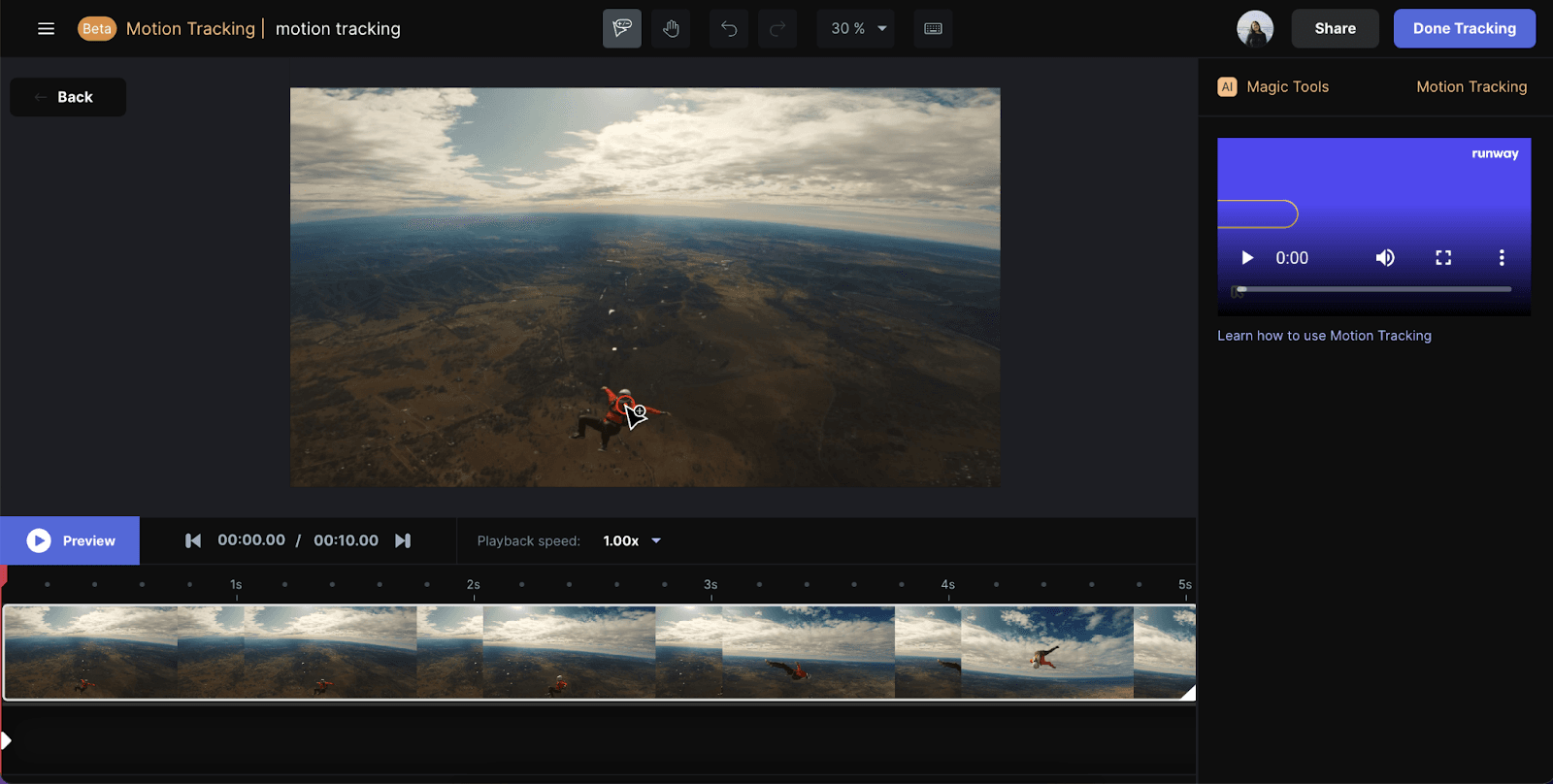
Source: Runway AI
11. Synthesia

Synthesia is an AI video generation platform that enables users to create professional videos using AI avatars from text. With more than 160 realistic AI avatars and support for over 140 languages and accents, Synthesia simplifies the video creation process for various use cases, including training, product marketing, and instructional content.
Key Features of Synthesia:
- 160+ AI avatars: Diverse avatars representing different ages, ethnicities, and styles, with the option to create a custom avatar based on the user’s likeness.
- 140+ languages & accents: A range of voices and accents to cater to a global audience, with the option to clone the user’s voice.
- 60+ video templates: Professionally designed templates that simplify video production for various purposes, from marketing to educational content.
- Micro gestures: Adds subtle non-verbal cues like winks, nods, and eyebrow raises to make AI avatars more realistic and engaging.
- AI-assisted scriptwriting: Built-in tools help users craft effective scripts directly within the platform.
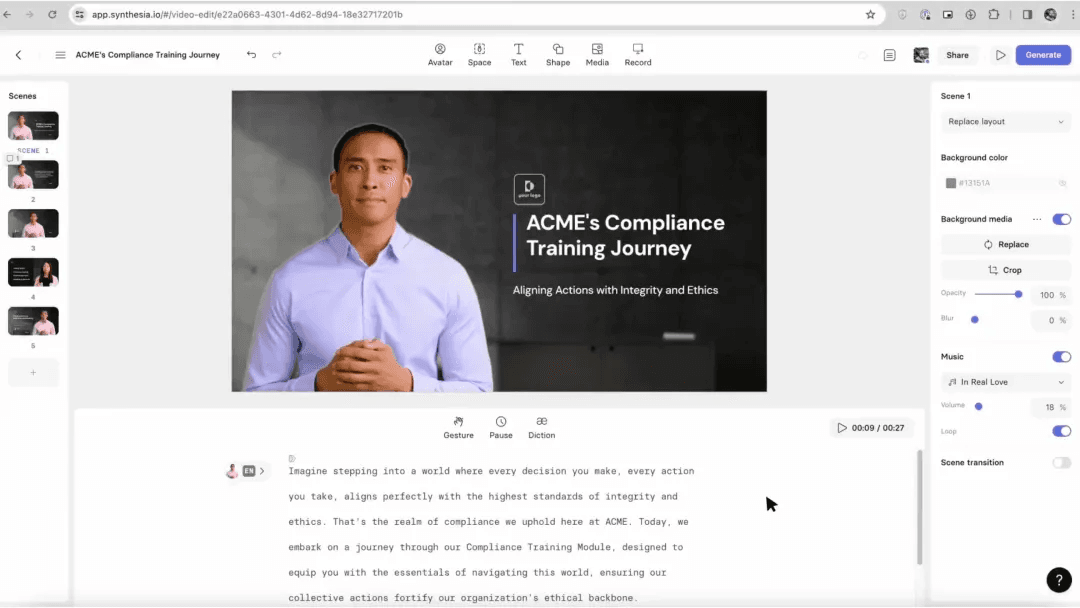
Source: Synthesia
12. Pictory

Pictory is an AI-powered video generator that simplifies the video creation process by automatically generating videos from text, URLs, or media files. It enables users to create professional-quality videos without requiring technical skills or manual editing. Pictory’s platform automates tasks such as video generation, editing, adding subtitles, and voiceovers.
Key Features of Pictory:
- AI video editor: Helps edit videos easily with AI-powered tools, requiring no complex editing skills.
- AI subtitles & captions: Automatically adds accurate subtitles and captions to videos.
- AI voice generator: Generates realistic voiceovers and lets users upload custom voiceovers for videos.
- Pre-designed video templates: Creates videos quickly through a selection of professionally designed templates.
- Vast media library: Offers access to over 10 million royalty-free videos, images, and music tracks to improve projects.
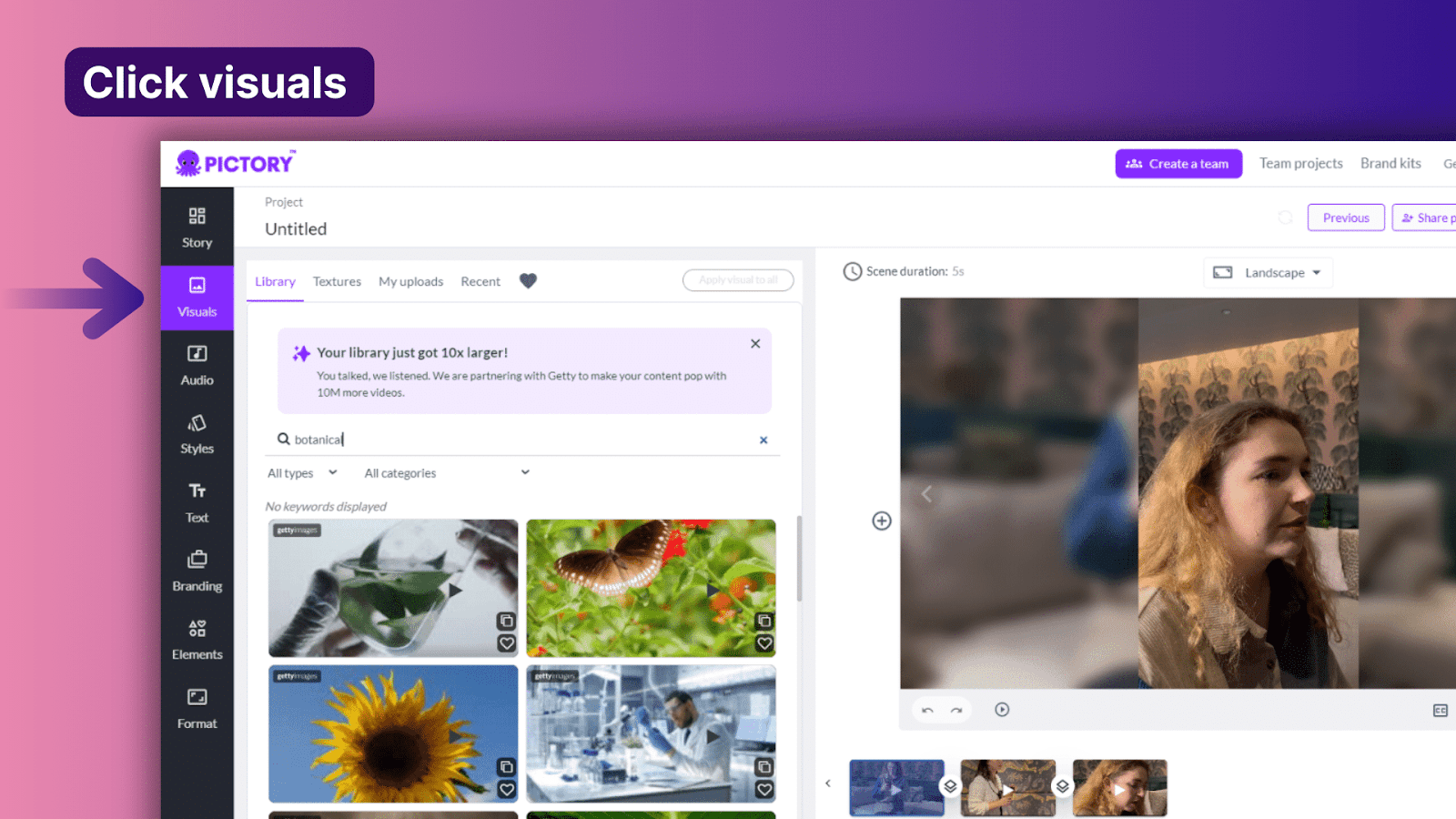
Source: Pictory
Speech and Voice Generation Tools {#speech-and-voice-generation-tools}
Speech and voice generation tools use AI to produce lifelike vocal outputs, supporting applications in customer service, content narration, and entertainment. These tools offer a range of vocal styles and languages, helping in creating multilingual and accessible audio content.
13. ElevenLabs

ElevenLabs is an AI-powered audio platform that enables users to create realistic, human-like speech from text. Specializing in Text-to-Speech, Speech-to-Speech, dubbing, and voice cloning, it offers tools for generating high-quality audio that can match various styles, languages, and contexts.
Key Features of ElevenLabs:
- Text-to-speech: Converts any text into natural-sounding speech, with precise intonation and context-aware delivery.
- Voice cloning: Allows users to create and clone custom voices, capturing unique styles and characteristics.
- Dubbing studio: AI-driven dubbing that translates audio while preserving emotion, tone, and speaker uniqueness.
- Speech-to-speech: Enhances existing speech by translating or modifying it in real time to create new audio.
- AI voice generator: Produces high-quality, contextually accurate voices for various use cases, from storytelling to video voiceovers.
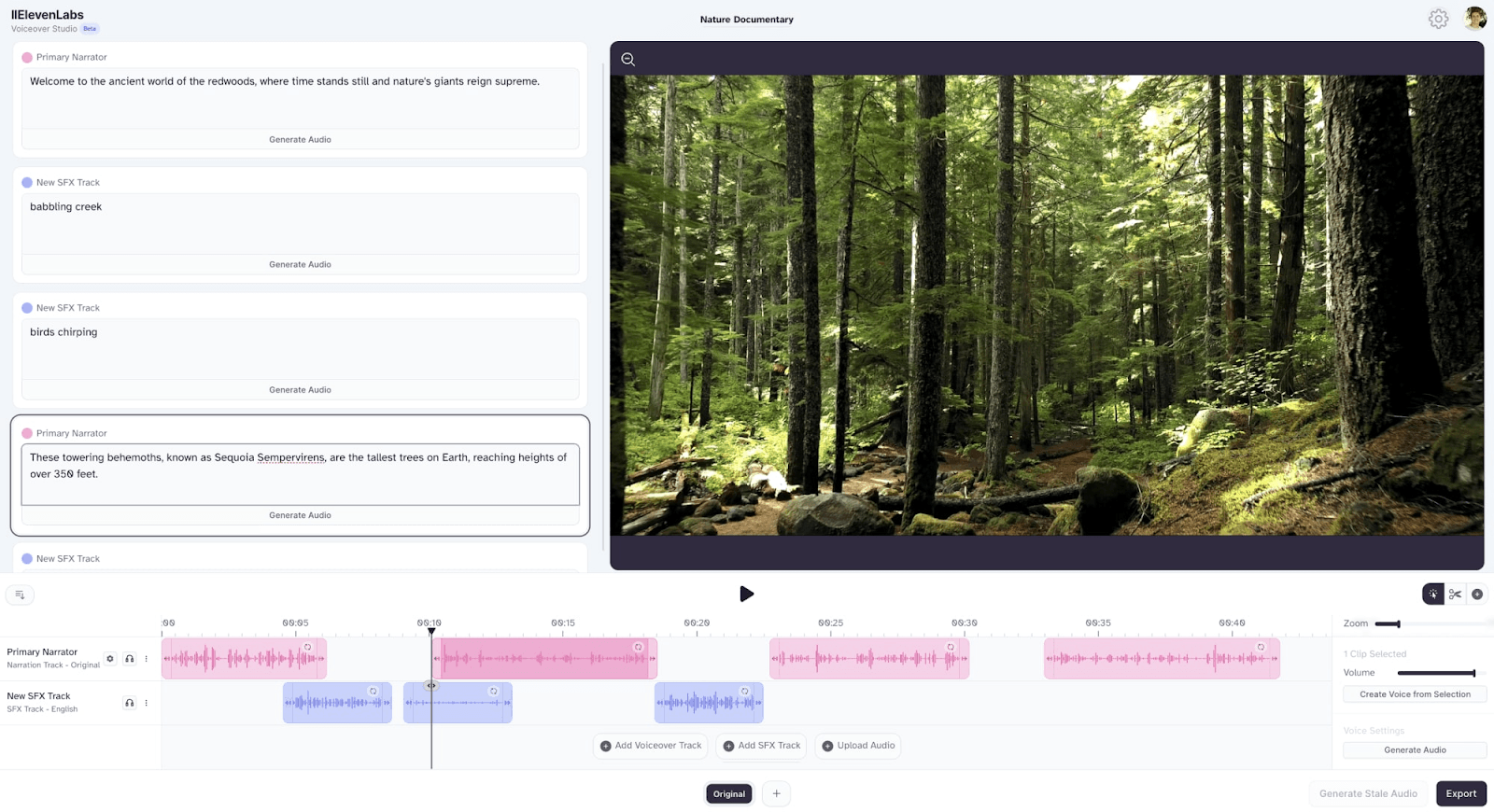
Source: ElevenLabs
14. Suno

Suno is an AI-powered music generator that allows users to create full songs, including lyrics, vocals, and instrumentation, from simple text prompts. Launched in partnership with Microsoft in December 2023, Suno has gained popularity for making the process of generating music as easy as using AI tools like ChatGPT for text creation.
Key Features of Suno:
- Text-to-music generation: Generates complete songs from text prompts, including vocals, lyrics, instrumentation, and song titles.
- Genre flexibility: Allows users to specify musical genres, offering a wide range from blues to electronic music.
- Extend feature: Users can upload their own music or use generated tracks to extend songs.
- Song customization: Lets users create songs from scratch or build on existing audio with features like custom lyrics and instrumentals.
- AI vocal performance: Adjusts the vocal style to match the genre, with improved song structure and vocal flow in its latest version (V3.5).

Source: Suno
15. Murf.ai

Murf.ai is a text-to-speech platform that transforms written text into realistic, human-like speech using AI. Designed for diverse use cases such as e-learning, advertisements, podcasts, and narration, Murf’s Speech Gen 2 model captures subtle nuances in speech, making it indistinguishable from human voices.
Key Features of Murf.ai:
- Realistic AI voices: Produces voices that are fluent and indistinguishable from human speech, capturing natural intonation and expression.
- Multilingual support: Provides voices in over 20 languages, including regional accents for English, Spanish, Hindi, French, German, and Portuguese.
- Speech gen 2 model: A state-of-the-art neural text-to-speech model that excels in clarity, emotional expression, and handling complex linguistic features.
- Customization tools: Features for adjusting pitch, pauses, emphasis, and pronunciation, allowing users to fine-tune their voiceovers to match their intended tone and style.
- Say It My Way: Mimics user-specified intonation, pace, and pitch for personalized voiceovers that reflect the desired emotion and delivery.
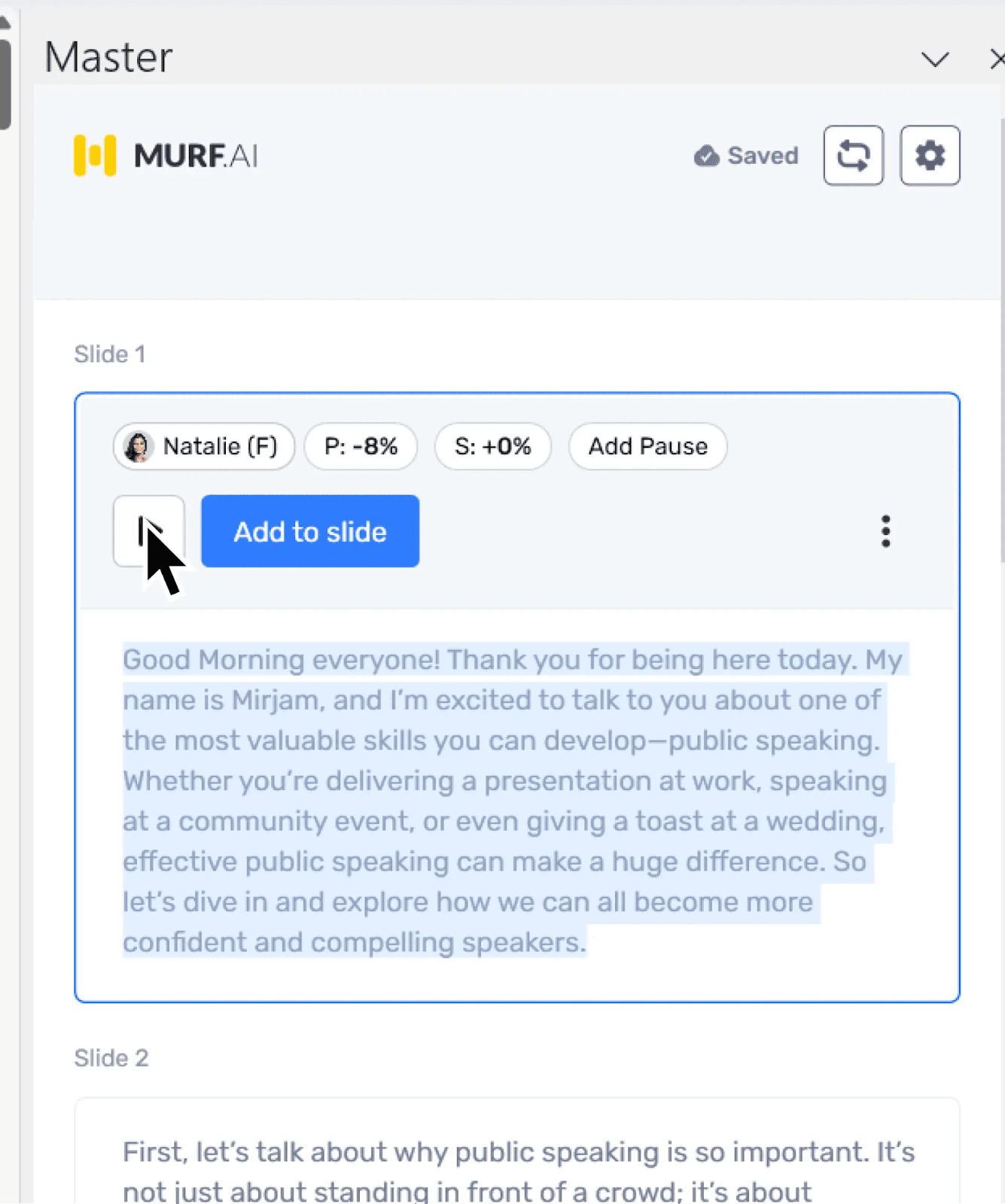
Source: Murf.ai
Create GenAI Applications with Acorn
To see what you can start building today with GPTScript, visit our docs at https://gptscript-ai.github.io/knowledge/. For a great example of image generation at work check out our blog Building a Generative Story Book App with GPTScript.